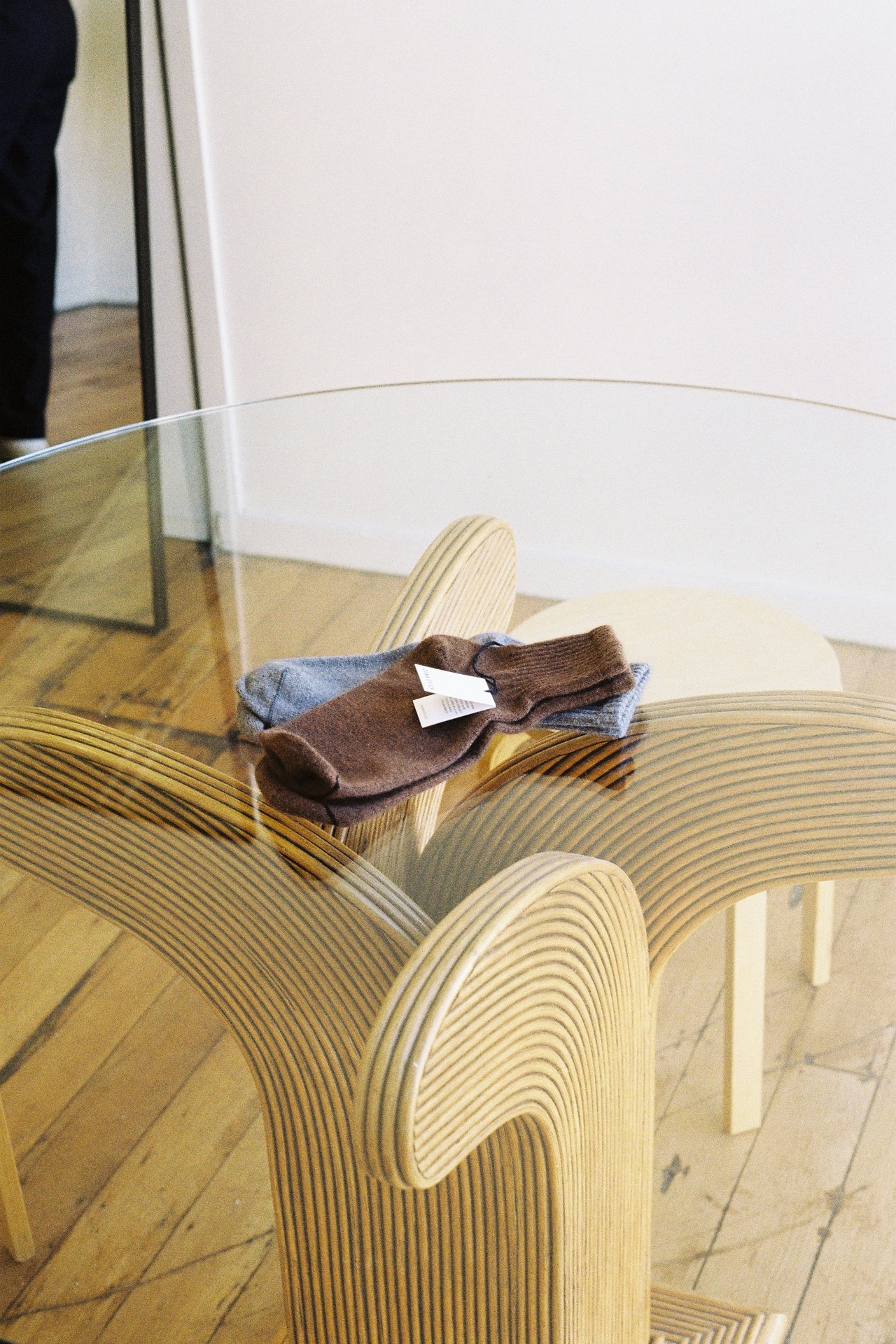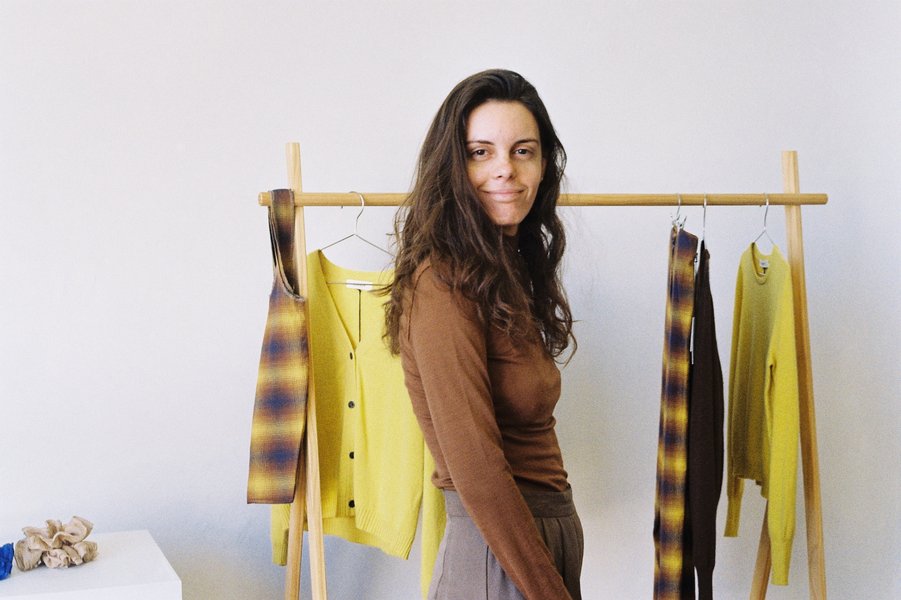Ovna Ovich celebrates the natural environment and embodies a modern sensibility of luxury. Here, designer Marina Davis talks us through her approach that focuses on using, reworking and preserving local and material resources to create new ways of producing — reimagining fashion with a long-term view.
What’s been the most challenging lesson you have learnt since you started your business?
Building an ethical clothing brand doesn't come together overnight.
What inspires your collections? Is there a rhythm to your creative process?
Any moment can be a moment of inspiration. When I least expect it, a thought might pop into my head, and it will guide the overarching idea I want to talk about for a collection. My process is as fluid as it is rhythmic; with the repetition of the cycle, it becomes more and more rhythmic. However, each collection can't be forced and needs to come together with time.
The pandemic pressed pause on business, as usual, with many acknowledging their role in driving unsustainable consumption. Do you think fast fashion can slow down?
With increasing awareness, more and more people will hopefully not want to support such business models, and fast fashion will have to adapt or fizzle.

From an ethical standpoint, you have rigorous sourcing principles and manufacture locally. Despite recent campaigns from Fashion Revolution, are you worried that people aren’t aware enough of the connection between cheap things and how that exploits cheap labour?
I am concerned that people are still excited and even proud of purchasing a new product for a next-to-nothing price. Price before quality for quick satisfaction needs to be replaced by more thoughtful consumption with a longer-term view.
Previous Chapters collections have featured garments locally dyed with eucalyptus leaves. What inspired this infusion of upcycling ingenuity?
The beautiful hues and the absence of harmful chemicals involved in natural dying have long been an interest, so rather than using more resources by creating new products, I reworked some stock on hand with natural dye to provide a new layer. Fallen eucalyptus leaves were gathered after a storm to overdye hemp organic cotton tees, and possum merino knitwear was overdyed with indigo. I am forever curious to explore materials and processes that fit within the low-impact parameters I have set for the brand.

You work a lot with GOTS (Global Organic Textile Standard) certified organic textiles and spoke of working more with hemp. How do you balance material costs and the extra work to remain low-impact and viable?
It's a work in progress! My values that hold the most weight have become more defined, and progress over perfection is something I've had to come to terms with.
You grew up on an isolated farm in the deep South. How much do you think your upbringing informed your approach to design and business? You’re obviously thinking about the greater whole of the planet.
The natural environment was my everything growing up on the farm, and city life was foreign to me, so I guess working with rather than against our natural resources is my first language. Caring for the origins of natural fibres used for textiles and the unwavering dedication needed to run your own business is how I think my farm upbringing has shaped the basis of my work.

Your attention to aesthetics and quality, the notion of keeping things forever, has long been a part of your ethos. Yes, you have to sell clothes, but this is also about heritage, community and climate — something which feels all the more significant in light of the pandemic. It’s also making everyone re-evaluate how they want to live their lives. How do we challenge and reimagine the broken fashion system?
As the saying goes, we vote with our dollar, so all the voters out there need to be informed to ask important questions before making their voting/buying decisions.
Questions to ask yourself:
Do I need it?
What is it made from? Will it biodegrade? Can it be recycled?
Who made it, and in what conditions?
How does it fit within my existing wardrobe?
Can I find a pre-loved version?
We need to support responsible companies that put the planet and people before profit.
This month you will release Chapter 19. Can you tell us a bit about the inspiration behind this collection?
Chapter 19, 'Cascade', celebrates a flow from previous chapters. An extension of existing ideas and materials, peppered with fresh thoughts and a woven plaid textile that illustrates this motion. I have collaborated with my talented friend Anastasia Doniants to create imagery for this Chapter in Armenia at the Yerevan Cascade. The Cascade is a giant limestone stairway with a series of cascading waterfalls, sculptures and terraced gardens, connecting the downtown with the hilltop Victory Park. It really is quite the magic spot!
And finally, how do you balance it all? Do you have any daily practices that anchor you and keep you balanced?
This is also a work in progress! Walking, stretching, music, lemon water and hugs.

These photographs were taken at the Ovna Ovich studio on Karangahape Road, Tāmaki Makaurau, Auckland and feature pieces from Chapter 19, releasing late May. To stay abreast of all Ovna Ovich happenings, sign up for the newsletter via ovnaovich.com.





